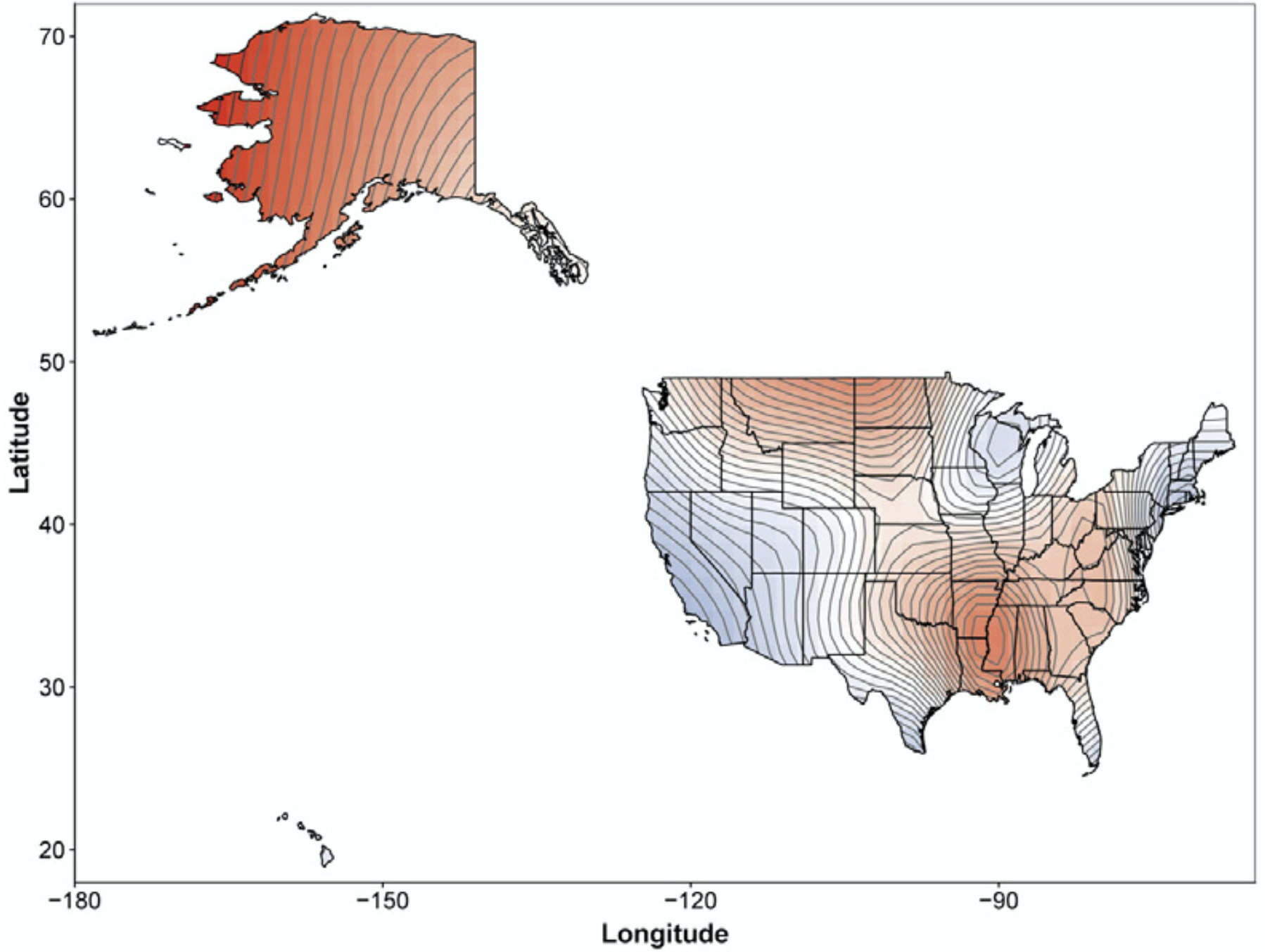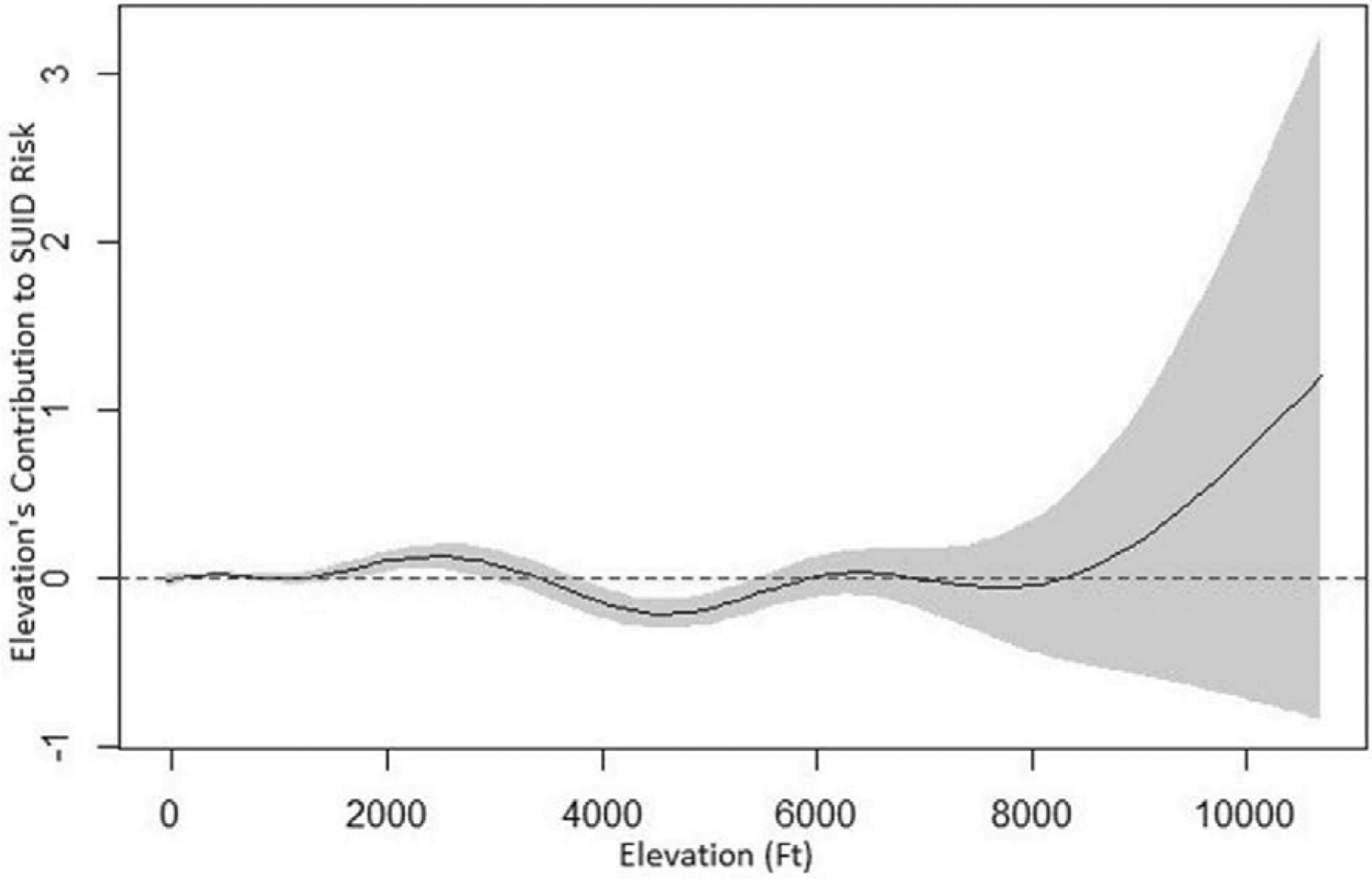Other Research
Geographic Variation in Sudden Unexpected Infant Death in the United States
The goal of the study is to assess the geographic variation of sudden unexpected infant death (SUID) and test if variation in geographic factors, such as state, latitude, and longitude, play a role in SUID risk across the US. We analyzed the Centers for Disease Control and Prevention’s Cohort Linked Birth/Infant Death dataset (2005-2010; 22,882 SUID cases, 25,305,837 live births, rate 0.90/1000). SUID was defined as infant deaths (ages 7-364 days) that included sudden infant death syndrome, ill-defined and unknown cause of mortality, and accidental suffocation and strangulation in bed. SUID geographic variation was analyzed using 2 statistical models, logistic regression and generalized additive model (GAM). Both models produced similar results. Without adjustment, there was marked geographic variation in SUID rates, but the variation decreased after adjusting for covariates including known risk factors for SUID. After adjustment, nine states demonstrated significantly higher or lower SUID mortality than the national average. Geographic contribution to SUID risk in terms of latitude and longitude were also attenuated after adjustment for covariates.
Altitude and Risk of Sudden Unexpected Infant Death in the United States
The effect of altitude on the risk of sudden infant death syndrome (SIDS) has been reported previously, but with conflicting findings. We aimed to examine whether the risk of sudden unexpected infant death (SUID) varies with altitude in the United States. Data from the Centers for Disease Control and Prevention (CDC)’s Cohort Linked Birth/Infant Death Data Set for births between 2005 and 2010 were examined. County of birth was used to estimate altitude. Logistic regression and Generalized Additive Model (GAM) were used, adjusting for year, mother’s race, Hispanic origin, marital status, age, education and smoking, father’s age and race, number of prenatal visits, plurality, live birth order, and infant’s sex, birthweight and gestation. There were 25,305,778 live births over the 6-year study period. The total number of deaths from SUID in this period were 23,673 (rate = 0.94/1000 live births). In the logistic regression model there was a small, but statistically significant, increased risk of SUID associated with birth at > 8000 feet compared with < 6000 feet (aOR = 1.93; 95% CI 1.00–3.71). The GAM showed a similar increased risk over 8000 feet, but this was not statistically significant. Only 9245 (0.037%) of mothers gave birth at > 8000 feet during the study period and 10 deaths (0.042%) were attributed to SUID. The number of SUID deaths at this altitude in the United States is very small (10 deaths in 6 years).

